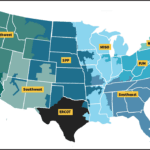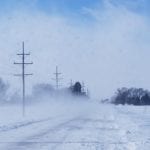It’s peak season for the U.S. power industry. While actual dates may vary from one utility to another, generally the summer peak period spans from Memorial Day (May 25 this year) to Labor Day (Sept. 7). It’s a time when power companies do everything possible to ensure power plants are available and able to provide 100% capacity 24/7.
Many plants prepare for peak season by taking spring maintenance outages. All equipment gets a thorough inspection and every known deficiency gets addressed. It’s similar to what you might do to your car prior to taking a long road trip—change the oil, check the tires, top off all the fluids, inspect belts for signs of trouble, and basically ensure no obvious problem goes unidentified. Now is when the rubber hits the road for the power industry.
Pandemic Alters Normal Plans
However, COVID-19 disrupted the usual routine. On May 12, POWER hosted a webinar titled “Market Insights—Spring Report.” The session, which was recorded and is available for viewing through a link on POWER’s website (www.powermag.com/webinars), included panelists from four of the North American Regional Transmission Organizations (RTOs)/Independent System Operators (ISOs). Each speaker gave a short presentation covering trends in their territory and touching on impacts of the coronavirus.
Philip Bruich, director of markets for the Southwest Power Pool (SPP), which oversees the bulk electric grid and wholesale power market in all or parts of 14 states in the central U.S., said, “We’ve seen a marked change in our scheduled generation outages.” Bruich presented a chart showing the generation capacity that was offline for scheduled outages in the January through May timeframe from 2016 through 2020. While 2020 was fairly consistent with the other years in January, February, and most of March, it was about 30% less in April and May compared to previous years.
Bruich said RTO members had indicated to SPP that the driving force behind the decrease in outages was crew unavailability. He suggested there was uncertainty in many circles about how COVID-19 might spread; confirmed cases were growing in all areas and no one seemed to know when the trend might end. “They didn’t want to put their crews at risk and at the same time didn’t want to get in the middle of a busy outage season—which you typically see in April and May—and not be able to wrap up the generation outages quickly enough, again, due to some concerns on what crew unavailability might be,” he said.
The problem, of course, is that when scheduled outages are canceled, some of the work that was planned can’t be done and gets deferred. There is usually a reason for work to be scheduled, such as a vibration reading trending higher, an ultrasonic test result indicating excessive wear, or a vendor identifying a deficiency—similar to an automobile recall. Those problems don’t go away without maintenance, and usually worsen the longer they go unaddressed. That could mean more forced outages during peak season this year, when equipment that didn’t receive the necessary attention ultimately fails.
Furthermore, some spring outages will likely shift to the fall, which is another common outage time as load demand decreases and more plant managers choose to shut down for maintenance. Bruich said SPP could possibly see a 30% increase in scheduled outages later this year or an increased forced outage rate. “This is going to be a very delicate balancing act going forward,” he said.
Load Down This Spring, Forecasting Summer Demand a Challenge
New York has been devastated by the pandemic, and it’s not out of the woods yet. Gov. Andrew Cuomo ordered a statewide lockdown on March 20, which had a significant impact on power system load. Emilie Nelson, executive vice president with the New York ISO (NYISO), said the New York Control Area experienced about an 8% reduction in peak load as a result of stay-at-home orders.
“Interestingly, in New York City, the reduction in demand at times was about 20% below what we typically see,” she said. “We’ve seen shifts in commercial demand, as many of the office buildings have been closed down, and increased residential demand as people shelter in place and work from home.”
But predicting what will happen during peak season is not an easy task. Some parts of New York, mostly upstate, are starting to reopen. Nelson said understanding how the reopening might dovetail with summer behavior across the commercial and residential sectors is difficult. “Quite frankly, it’s hard to tell,” she said. “Certainly, the situation is very fluid and dynamic at this point.”
SPP experienced effects similar to NYISO. Bruich said SPP analyzed this year’s load against like-kind days from the past, meaning comparisons were between days with temperatures of plus or minus 3F. “Beginning in late March and April, we’ve seen about a 7% to 9% drop in our load,” he reported.
However, the Electric Reliability Council of Texas (ERCOT) grid was less affected by stay-at-home orders. Kenan Ögelman, vice president of Commercial Operations with ERCOT, said some days there was no impact on peak load, while other days saw a decrease of between 2% and 5%. In general, though, ERCOT’s energy usage has been down 2% to 5% since lockdowns began.
Like Nelson, Ögelman suggested predicting summer load would be difficult. “Past analysis isn’t necessarily the best indicator of future conditions,” he said. “One reason for that is that the state restrictions are changing in Texas. So, what we saw in the past may be very different than what we see in the future.” ■
—Aaron Larson is POWER’s executive editor.










